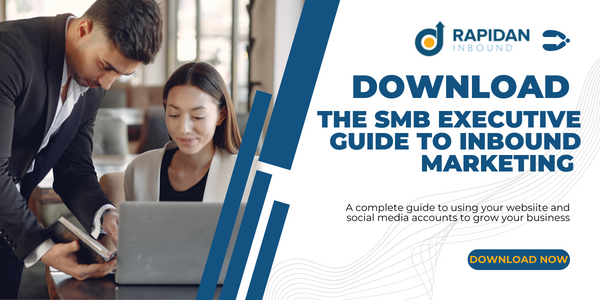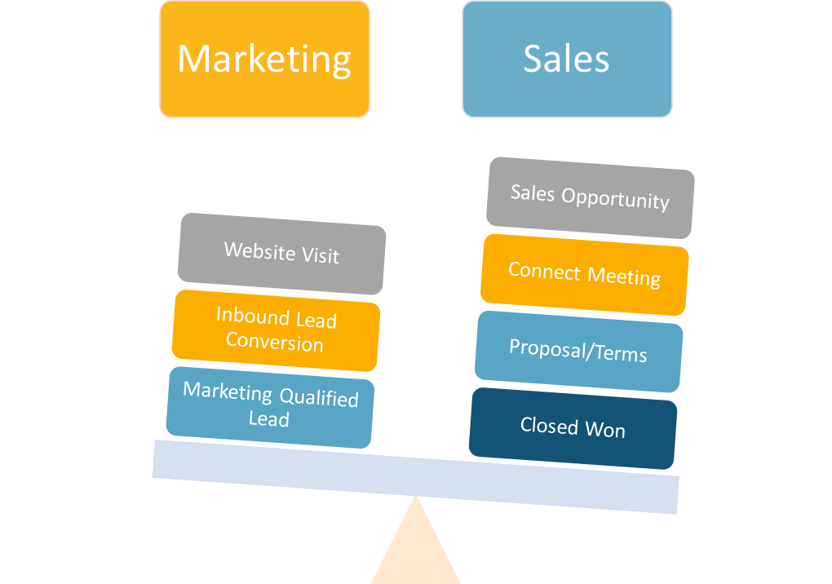The 7 Essential Elements Of A Winning Business Development Plan

How has your year been so far? Are you going to hit your revenue goals? Have you gained insight into how to best generate bottom-line revenue?
These are all questions you should be asking yourself as you look back on past performance. The most important reason
After all, how are you going to get to your destination without a road map (or GPS navigation?) For professional services and technology businesses turning their attention to the upcoming year, here are the 7 essential elements of a winning business development plan.
A definition of business development
The term "business development" means different things to different people.
For me, the best definition of business development is Scott Pollack's definition from his article in Forbes: Business development is the creation of long-term value for an organization from customers, markets, and relationships.
1. Set your destination
The foundation of your business development plan is to define the high-level goals that you want to achieve in the next 12 months. Don't worry, we're going to get a lot more granular later in the process. But for right now, what are the 3-5 achievements that will determine whether or not your year has been successful. We'll call these big, hairy, audacious goals.
These high-level goals will almost always include revenue goals. For example, you may set a goal that says you want to generate $25 million in revenue in the upcoming year. But there are other high-level goals that should be considered - I recommend limiting your high-level goals to between 3 and 5 to ensure focus.
Here are some other high-level business development goals you should consider:
Your service experience is at the core of long-term value creation. Don't forget, it costs 7 times more to land a new customer than it does to keep the ones you already have
If you're a new business that is highly dependent on one or two customers, diversification is probably important to you. After all, if you lose one (or both) of those customers, the impact on your business could be devastating. In this case, you would set a goal to reduce your average CLV as you bring on more customers to diversify your revenue base.
On the other hand, you could have too many low-revenue customers. You could be spending your time chasing late-payers that aren't generating sufficient margins. In this case, you would set a goal to increase your average CLV
For example, you may have hired a new business development professional who has relationships in an industry that you haven't served in the past. If your service adds value to prospects in this industry, you could set a SMART goal to expand into this industry. But make sure it's a goal that can be easily measured. For example, the goal could be to sell 4 consulting projects to Web Hosting companies by June 30, 2023.
Be very careful: when you expand, you risk taking
It's not enough to say something like, "we will be more visible within the Northern Virginia Technology Council." You need to set SMART goals that can be measured. For example, we will attend 6 committee meetings in the first quarter.
I recommend that you limit your networking channels and go deep in the ones in which you participate

2. Focus your approach
Tightly defined target markets and buyer persona profiles are crucial for a successful business development plan. Here are some of the key benefits of a focused business development plan.
- A focused business development approach allows you to qualify and score prospects to prioritize limited sales and marketing resources. Use marketing automation software to segment and score your leads so that you're spending time and resources on the prospects most likely to close.
- Well-defined target markets and buyer profiles let you create content that drives revenue to the bottom line. The 2016 Demand Gen B2B Buyer Behavior Survey asked B2B buyers, "Why did you choose the winning vendor?" 97% said, "the winning vendor demonstrated a stronger knowledge of the solution area and the business landscape" and 94% said they, "demonstrated a stronger knowledge of our company and its needs." The moral of the story? Content that rings true with your buyers closes deals - they're not looking for generalists.
- A focused approach allows you to develop products and services specifically for your target markets. From the first experience with your marketing to working with a salesperson to customize a solution to using your service, a focused approach lets you become a trusted adviser in your market space.
Even if you have defined markets and buyer personas, it's a good idea to revisit them as you develop your business plan. Changing circumstances often dictate changing your target markets.
Take the example of an IT Consulting business who wants to sell deals with higher Lifetime Values. To reach their goals, they need to target larger businesses. In the larger businesses, these decisions are made by the CIO rather than the business owner in a smaller business. A new buyer persona profile for the CIO in the target market needs to be created.
It also makes sense to re-look at your target markets.
- How did each market perform in the prior year?
- Are their changing circumstances within the target market that affect your business?
- Do we have people on staff with relationships in other target markets?
Questions like these will help determine if you should enter new markets or exit old ones.
3. Define your marketing channels
The next step is to define the channels in which you will generate leads for each market segment. Here are some typical marketing channels for professional services and technology firms.
- Inbound leads - leads generated on your website with premium content and other offers.
- Paid Search Advertising - leads generated by search engine advertising like Google Adwords.
- Paid Social Advertising - leads generated by social media advertising like Facebook Ads or LinkedIn Sponsored Updates.
- Outbound leads - leads generated by outbound prospecting, primarily targeted email prospecting.
- Referrals - leads that are referred by satisfied customers.
- Networking - leads resulting from your networking efforts. They could be direct leads with prospects you meet or referrals from your network.
- Channel Sales - leads generated by channel partners.
- Cross-sells - these are opportunities to sell new products/services to customers
- Up-sells - these are opportunities to sell higher levels of products/services to customers.
A modern business development plan has to be data-driven! You may remember me saying earlier that we would get much more granular with business development SMART Goals. Now's the time to break down your high-level revenue goals by target market and then by marketing channel. Click on the link below for a detailed description of a SMART business development goal setting process
You need to develop tactical plans for all of your channels so that the marketplace receives a consistent approach, regardless of which team member is interacting with it.
A consistent tactical plan for each target market and marketing channel effectively promotes your brand and allows you to adjust to changing circumstances.
4. Choose KPIs and create dashboards to keep you on track
A data-driven business development process allows managers to keep on top of KPI performance so that there aren't any surprises at the end of the quarter. It also provides timely marketplace feedback on the effectiveness of your business development plan, letting you focus resources on high-performing tactics and either improving or abandoning low-performing ones.
Choose the metrics that matter, those that contribute to generating revenue. Think about your professional services sales funnel for each of your marketing channels. Here's a typical funnel for inbound leads being advanced for sales pursuit.

5. Define your sales process to align with your customer's needs
The key to a scalable revenue generation process is to consistently apply your sales approach in a way that corresponds
For each lead source, identify the milestones that need to be reached in order to advance a sales opportunity to the closed won stage. These milestones can then be entered into your CRM system so that the salesperson can take the necessary actions to advance to the next milestone and management can have insight into the sales pipeline.
One of the most important parts of any sales process is qualifying leads. SMB businesses need to focus limited resources on those leads and opportunities that have the highest probability of turning into profitable customers. My business focuses on technology and professional services businesses - that's what we know. We're not going to waste time chasing after opportunities in the retail sector. Even if we do get the business, there's a distinct possibility that there will problems down the road.
When defining your sales process, keep in mind the complexity of the modern buying process. It's no longer enough to sell the economic buyer, today's B2B buying process involves multiple stakeholders. Make sure your buying process reflects this.
- Has the user buyer signed off on your solution?
- Have you given the technical buyer (procurement) the necessary data to comply with corporate governance requirements?
- Is the economic buyer comfortable with your price and potential ROI?
These (and more) are questions that need to be factored into your sales process. Be very careful about skipping steps - that's how that sure thing gets torpedoed at the end.
PRO TIP:
6. Determine resource needs
Now that you know how you want to grow your business, you need to figure out the most efficient way to execute your business development plan. What are your people, technology, and resource needs?
One of the key questions that
It may make sense to hire an agency or consultant to help you get the results you need without a long ramp-up period. Rather than just have them do the work, look for opportunities for internal people to learn from the consultant.
Determining technology needs is next on your list. Here are some of the technologies you will likely use in your business development:
- CRM software
- Inbound marketing/marketing automation software
- Sales prospecting software
- Webinar/web conference software
- Website Content management system
- Dashboard software
- Graphic design/photo editing/video editing software
We recommend the HubSpot Growth Stack (CRM/Inbound Marketing/Sales Prospecting) because of its feature-rich capabilities and interoperability. With the right software, you can automate your business development process to optimize your sales and marketing process.
Another consideration is how you will staff your sales operation. Many professional services businesses are structured so that consultants both sell and manage accounts. Technology companies often have dedicated salespeople. In order to hit your revenue targets, what investments in salespeople do you need to make? As a professional services business, do you need to hire a sales assistant to help consultants stay focused on business opportunities?
In any event, you need to budget for all of your sales and marketing expenses. The number budgeted for sales and marketing needs to be related to revenue. According to the Wall Street Journal, the average consulting business invests 12% of revenue in sales and marketing and the average software/biotech firm invests 15%. Companies focused on growth will invest higher amounts in sales and marketing
7. Share your business development plan with stakeholders
Once you have developed a strategic business development plan designed to create long-term value for your business, it's very important to share your vision with key stakeholders.
Don't just share the plan with your management team, make sure everyone in the company knows the crucial elements of your business development plan. Messaging, target markets, and high-level goals are important to everyone. Service, sales, and management should all be on the same page about the company vision for creating long-term value.
If you're hiring consultants or an agency to help you execute your business development plan, make sure they know the vision and goals of the company.
When we help customers write business development plans, we create 2 deliverables:
- A business development plan that lays out the strategy and goals for the upcoming year.
- A 90-day action plan laying out the specific tasks and resources to put the plan in place. We use 90 days because this is a good point in time to review data and make adjustments to the plan.
A well thought-out business development plan with appropriate measurement and review protocols is the best way to achieve your goals. With the right technology and automation, your plan can be both scalable and adaptable. Use these 7 elements to create a winning business development plan




